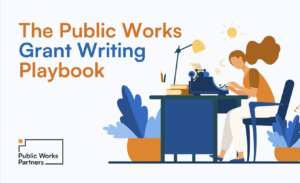Philanthropy is a dynamic sector, and strategies that were effective in the past may not be as relevant today. Staying up to date with trends can help ensure that your philanthropic efforts remain productive and have a positive impact on the causes and communities you aim to support.
5 Key Trends in Philanthropy For 2023
- Trust-Based Funding: Emphasizing trust between donors and organizations is increasing as it fosters genuine partnerships.
- Collaborative Funding: Donors are addressing systemic issues collectively.
- Policymaker Engagement: Policymakers are prioritizing the expedited movement of funds.
- Nonprofit Employees are Unionizing: More nonprofit workers are opting for unions. In various nonprofit organizations,employees view unionization as a means to improve wages, well-being, and fairness.
- Accountability & Mission Alignment: The public is demanding that nonprofits rigorously adhere to their mission and uphold their core values.
Strategies for Effective Philanthropy in 2023
In 2023, maximizing the impact of your philanthropic efforts requires a strategic approach. Whether you’re an individual, part of a foundation, or representing a corporation, these key strategies can elevate your giving:
- Transparency and Accountability: Foster transparency and accountability within the organizations you support. Regularly engage with grantees to track progress and address challenges.
- Knowledge Sharing: As nonprofits often grapple with staff shortages and technical needs, consider leveraging your own talents to support their missions. Sharing knowledge and resources can significantly strengthen their impact.
- Collaboration for Greater Impact: Seek collaborations with like-minded organizations, philanthropists, foundations, or government agencies. Together, you can amplify the positive change you aim to bring about.
- Strategic Giving: Prioritize organizations and projects that closely align with your mission and exhibit evidence-based or successful track records.
- Leveraging Technology for Efficiency: Embrace technology to enhance the efficiency of your philanthropic efforts. Civic Champs, for instance, empowers donors from anywhere to give and monitor their contributions, making philanthropy more reliable.
- Promoting Diversity, Equity, and Inclusion: To effectively promote diversity, equity, and inclusion into nonprofit organizations, invest in your people and culture. Attract and develop diverse talent, offer meaningful professional growth opportunities, and cultivate an inclusive community where individuals of all backgrounds feel valued and empowered to succeed.
4 Philanthropic Initiative Case Studies
Here are some examples of philanthropic initiatives that are leading the way in adopting these innovative approaches.
- The Mays Family Institute on Diverse Philanthropy: The Mays Family Institute on Diverse Philanthropy fosters a greater understanding of the ways in which underrepresented people are both inspired and informed donors by providing knowledge, education, and training.
- The Wallace Foundation: The Wallace Foundation aims to enhance learning opportunities for underserved children and promote the vibrancy of the arts for all. Through fruitful collaboration, the foundation and grantees together develop new knowledge and insights to help solve important problems.
- Johnson & Johnson’s Corporate Giving Initiative: Johnson & Johnson prioritizes the well-being of women and children, strives to improve healthcare quality, and ensures affordability for essential surgical procedures. In addition to providing disaster relief and donating essential supplies, the company innovates solutions for global health challenges. Through partnerships, collaborative efforts, technology, and innovative initiatives, the organization makes a significant impact both globally and locally.
- Robin Hood Foundation: The Robin Hood Foundation focuses on poverty alleviation in New York City. They use data analytics to identify the most effective poverty-fighting programs and continuously measure the impact of their investments.
The Future of Philanthropy
The potential for emerging technologies in philanthropy is immense. Younger donors are increasingly interested in philanthropy and seek tech-driven, convenient giving methods. The growing wealth of data between donors and nonprofits allows machine learning and AI to connect donors with organizations that resonate with them, reducing fundraising costs. Finally, digital payments and grants management software are increasing funding for grantees. To conclude, adapting your giving strategies to align with the evolving landscape of philanthropy is crucial for a more impactful and sustainable future.






 Public Works Partners is a WBE/DBE-certified urban planning and consulting firm. Our expertise lies in creating innovative, equitable, and sustainable solutions to complex problems.
Public Works Partners is a WBE/DBE-certified urban planning and consulting firm. Our expertise lies in creating innovative, equitable, and sustainable solutions to complex problems.